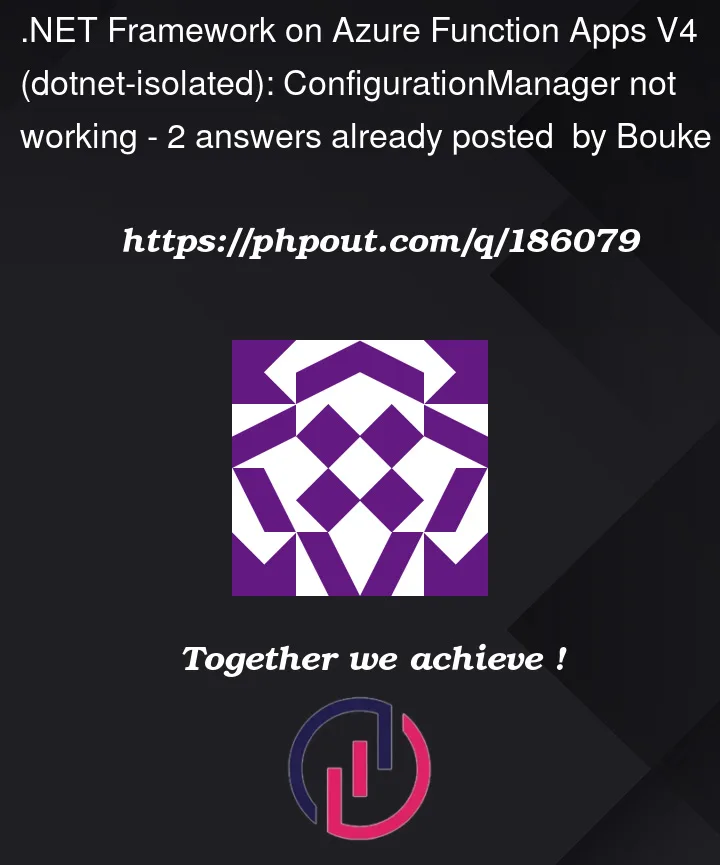I’m trying to migrate some functionality of a legacy .NET Framework over to Azure Function Apps V4 using dotnet-isolated. I can trigger the application, however the app settings and connection strings defined in the Azure Portal are not available through ConfigurationManager. Other parts of this application are hosted on App Services and ConfigurationManager works fine there.
There’s a lot of information available about IConfiguration and local.settings.json, however that’s not what I can use. There’s a lot of code depending on ConfigurationManager.AppSettings and ConfigurationManager.ConnectionStrings, which need to keep working as-is. One example is EF6, but also other custom code.
I’ve defined the app settings and connection strings in the Azure Portal. I can see these as environment variables in the Kudu "Environment" view, like this:
APPSETTING_my_setting="myvalue"SQLAZURECONNSTR_my_connection_string="foo=bar"
I somehow would’ve expected for this to "just work", but it doesn’t. Am I holding it wrong, or what can I do to convince ConfigurationManager to use these settings?




2
Answers
The Values which are set in the
local.settings.josnare available as Environment Variables.My
.csprojfile:We can read either by using the
EnvironmentVariableor from theIConfiguration.Using EnvironmentVariable:
My
Function1.csfile:Using IConfiguration:
OR
If set under ConnectionString
then read it as,
Output:
ConfigurationManagerhas never been driven by environment variables, and supports the.configXML configuration pattern. You still have that in App Service, in that it has a filesystem where those files can be placed in the relative location that (ASP.)NET expects, but it has no relationship to the App Service configuration collection. I suppose if you are familiar with IIS on-premises you might imagine that the configuration UI would be a view onto this XML configuration file, but that isn’t the case anymore, App Service configuration is distinct and is expressed to the application as environment variables.